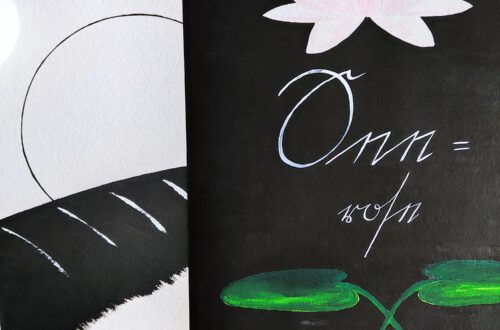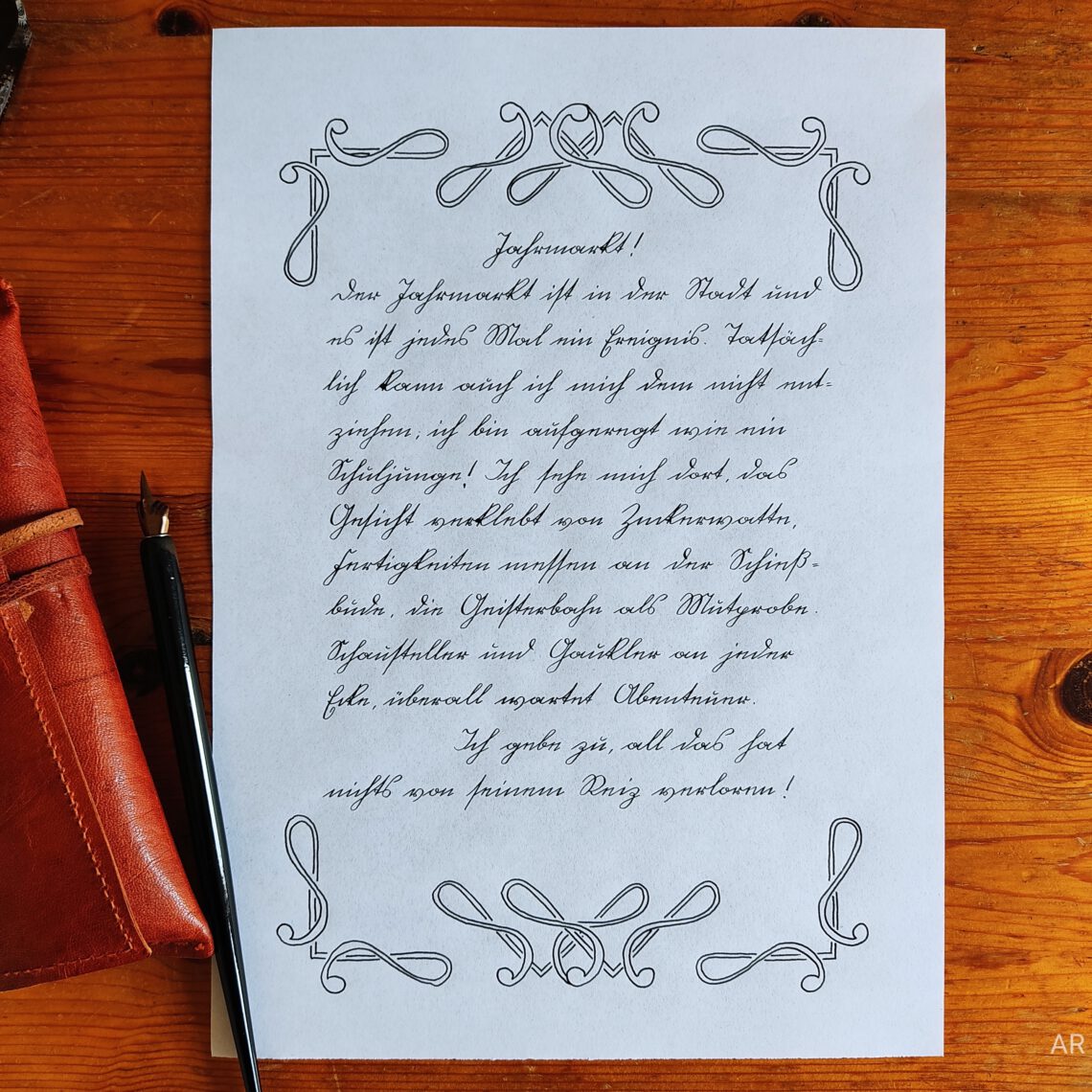
Fun fair! – Jahrmarkt!
You can smell it from afar – the scent of candied almonds, cotton candy and popcorn is wafting through the streets and gets more intense with every step. Then: Flashing lights and music from all directions you just don´t know where to look first! Total sensory overload. I love it!
A fair immediately transports me to another universe where anything seems possible. A sense of adventure sets in and I want to look at everything, ride the ghost train, get lost in the hall of mirrors, have my fortune told by the fortune-telling machine. I’m all in. Once a year, when the fair visited our small town, I was ultra jittery, couldn’t wait to go – preferably every day, even if by the third day you knew by heart where the stand with the curly fries was and that the airbrush tattoo tent was next to the tablecloth stand. No matter! It was so different compared to the rest of small town life that even the tablecloth booth somehow had flair. So many ways to spend your pocket money (no, I didn’t spend my money on tablecloths 🙂 ) but I loved the fair and still do. Completely immersed in this parallel universe that was built within a few days, stayed a few days and then the whole spook (fun!) was already over and the place was just a barren parking lot again. I had a real feeling of homesickness.
I imagine what it must have been like in the 19th century, when the fair evolved into an amusement market, with rides like the now historic horse-drawn carousel. I wonder if it was as exciting for people, or maybe even more exciting than it is today? You can´t tell, but it certainly captivated people as well. So different from everyday life! But it’s not only what you get from the fair as a visitor that’s fascinating. If you look behind the magic, a no less interesting world comes to light. The construction of an amusement ride, such as a horse-drawn carousel, required a great deal of manual labor. The production of carousels and rides developed into a real industry in the 19th century! There were companies that specialized in the production of rides or parts of them, such as the carousel horses on the poles. Engineering is another big field, it’s about statics, mechanics, the drive – from muscle power to cranks to steam engines and gasoline engines, everything was there. Sculptors, decorators and painters gave the carousel its typical appearance, made sure that technology and construction remained invisible and guests could immerse themselves in other worlds through the opulent visuals.
Incidentally, the Oktoberfest, probably the ultimate folk festival, which has been around since 1810 (on the occasion of the wedding of Crown Prince Ludwig of Bavaria and Princess Therese of Saxony-Hildburghausen; in that year it was still a horse race), featured a carousel for the first time in 1818.
So here we go, first cotton candy and then ghost train?
Have a great day!
Annika

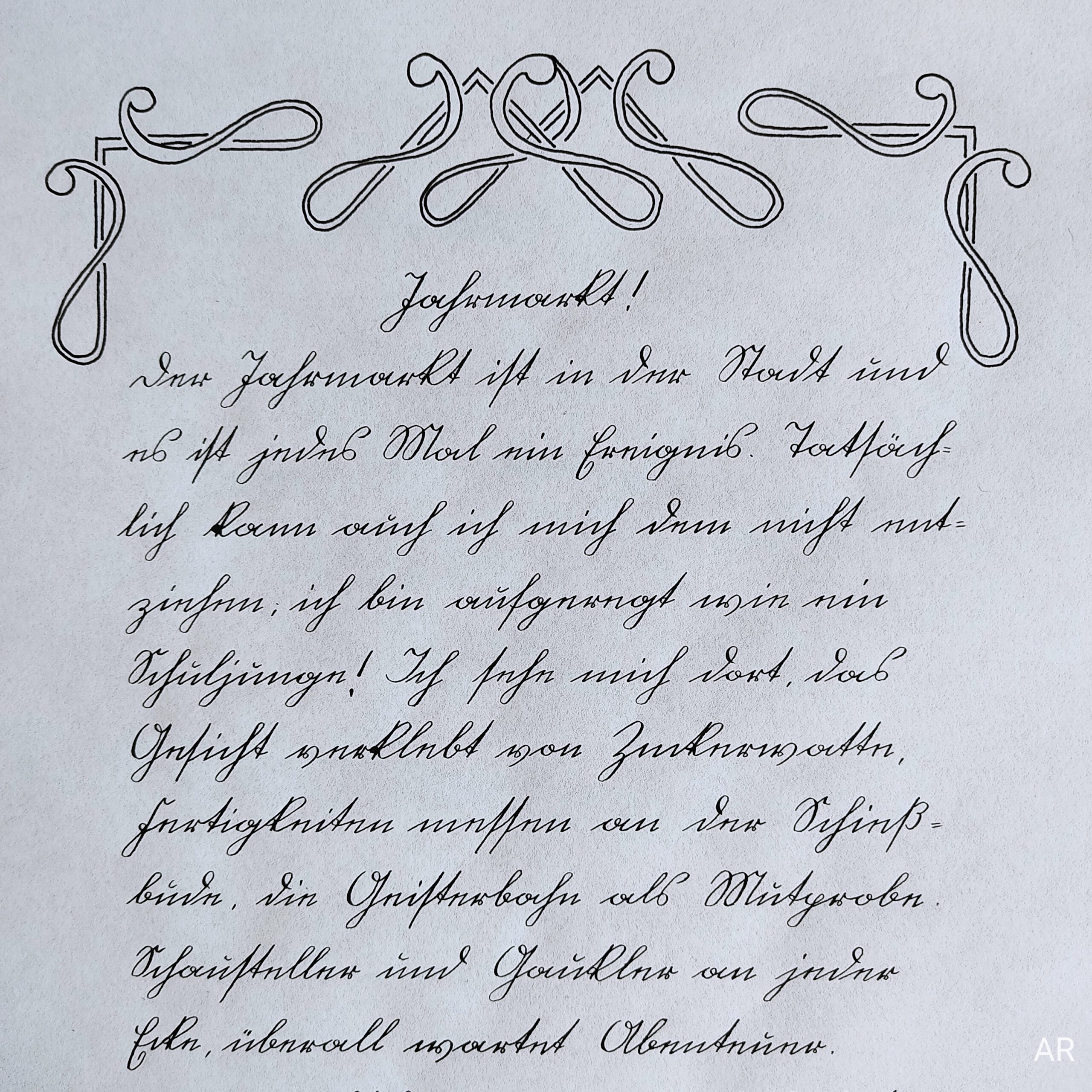
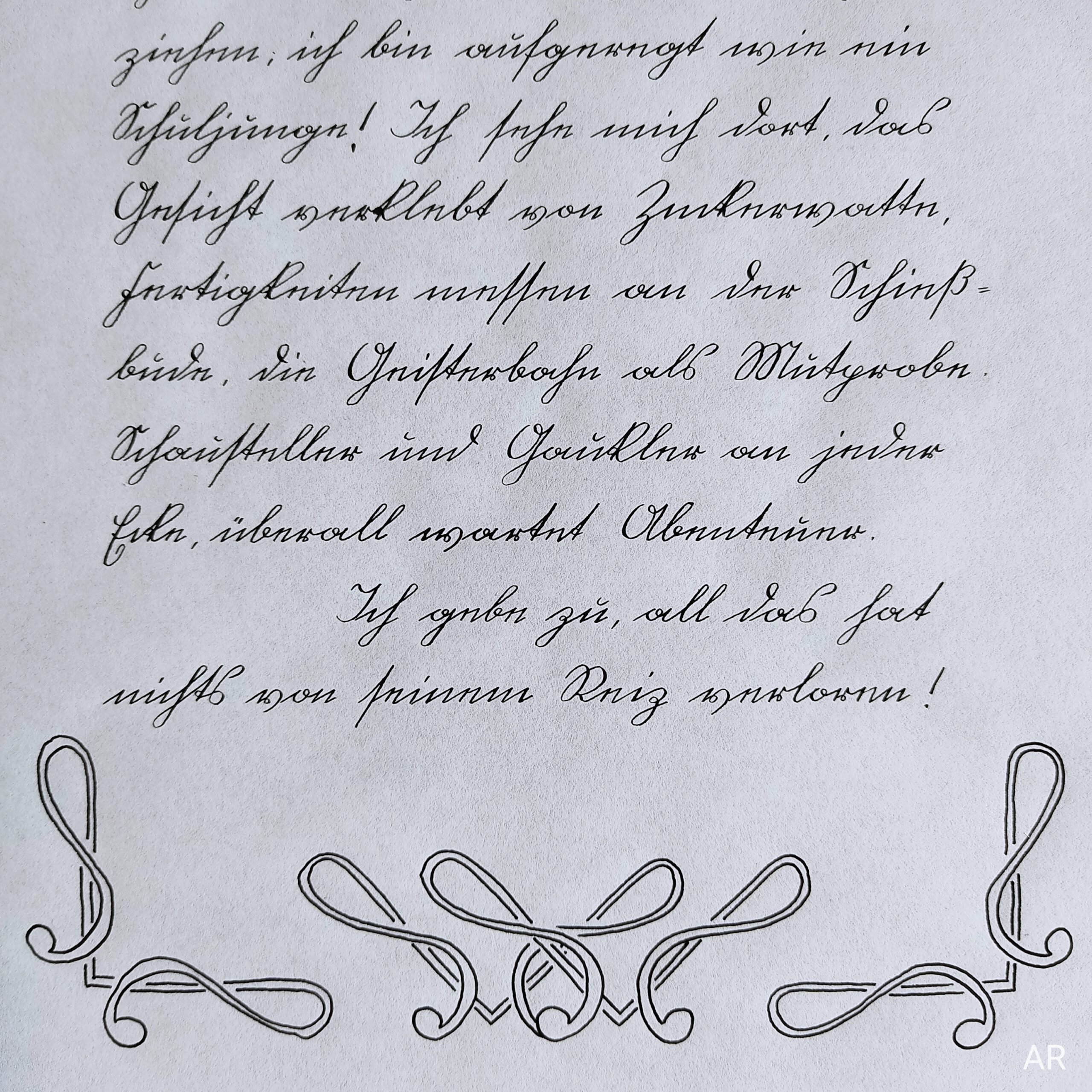

Der Jahrmarkt ist in der Stadt und (The fun fair is in town and) //
es ist jedes Mal ein Ereignis. Tatsäch= (and it is always a happening. In-) //
lich kann auch ich mich dem nicht ent= (deed I cannot deny the fact) //
ziehen, ich bin aufgeregt wie ein (that I am excited as a) //
Schuljunge! Ich sehe mich dort, das (schoolboy! I see myself with a) //
Gesicht verklebt von Zuckerwatte, (face sticky from candy floss) //
Fertigkeiten messen an der Schieß= (competing at the shooting) //
bude, die Geisterbahn als Mutprobe. (gallery, taking a ride on the ghost train on a dare.) //
Schausteller und Gaukler an jeder (Showmen and jugglers on) //
Ecke, überall wartet Abenteuer. (every corner, adventure waiting everywhere.) //
Ich gebe zu, all das hat nichts von seinem Reiz verloren! (I admit none of that has lost any of its charm!) //

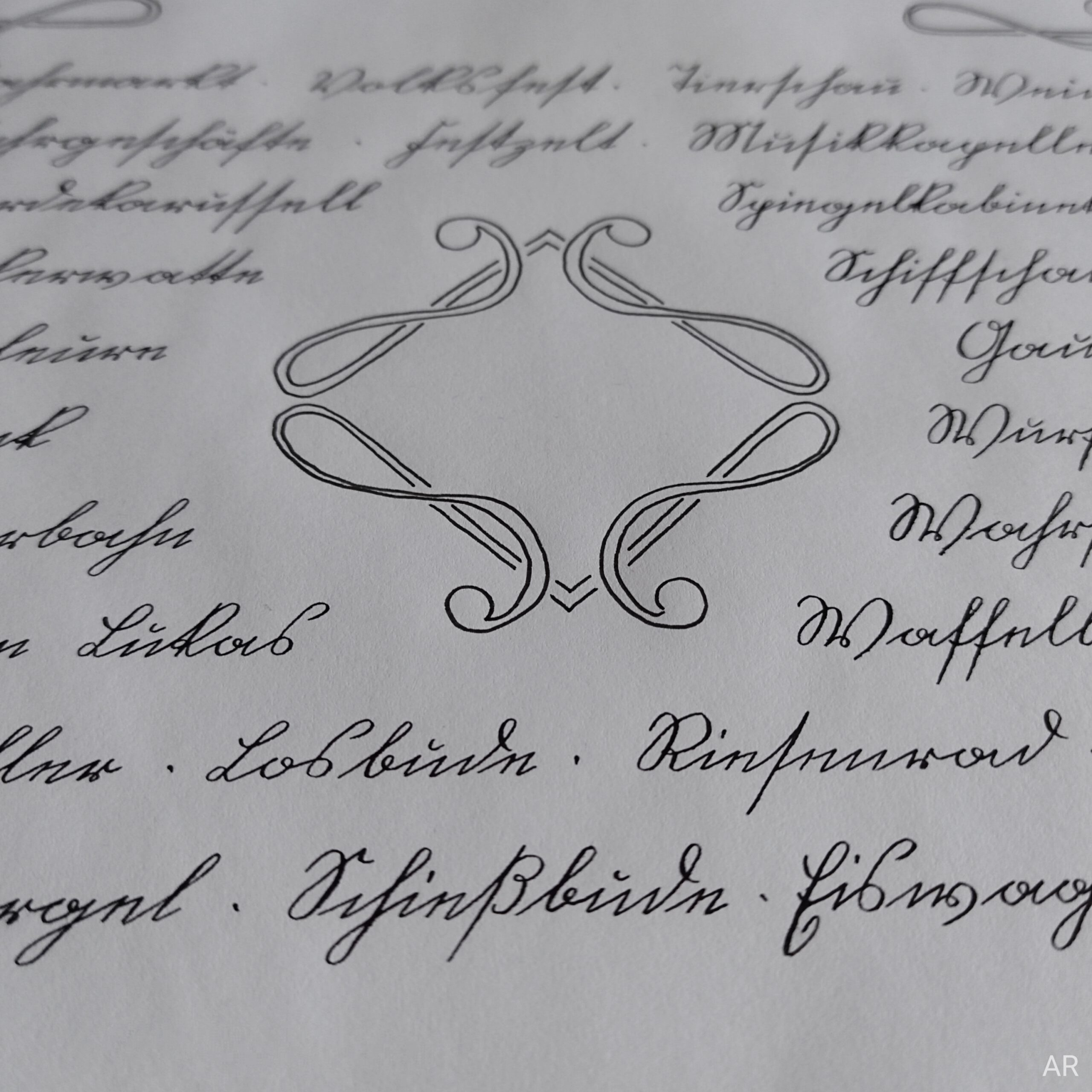
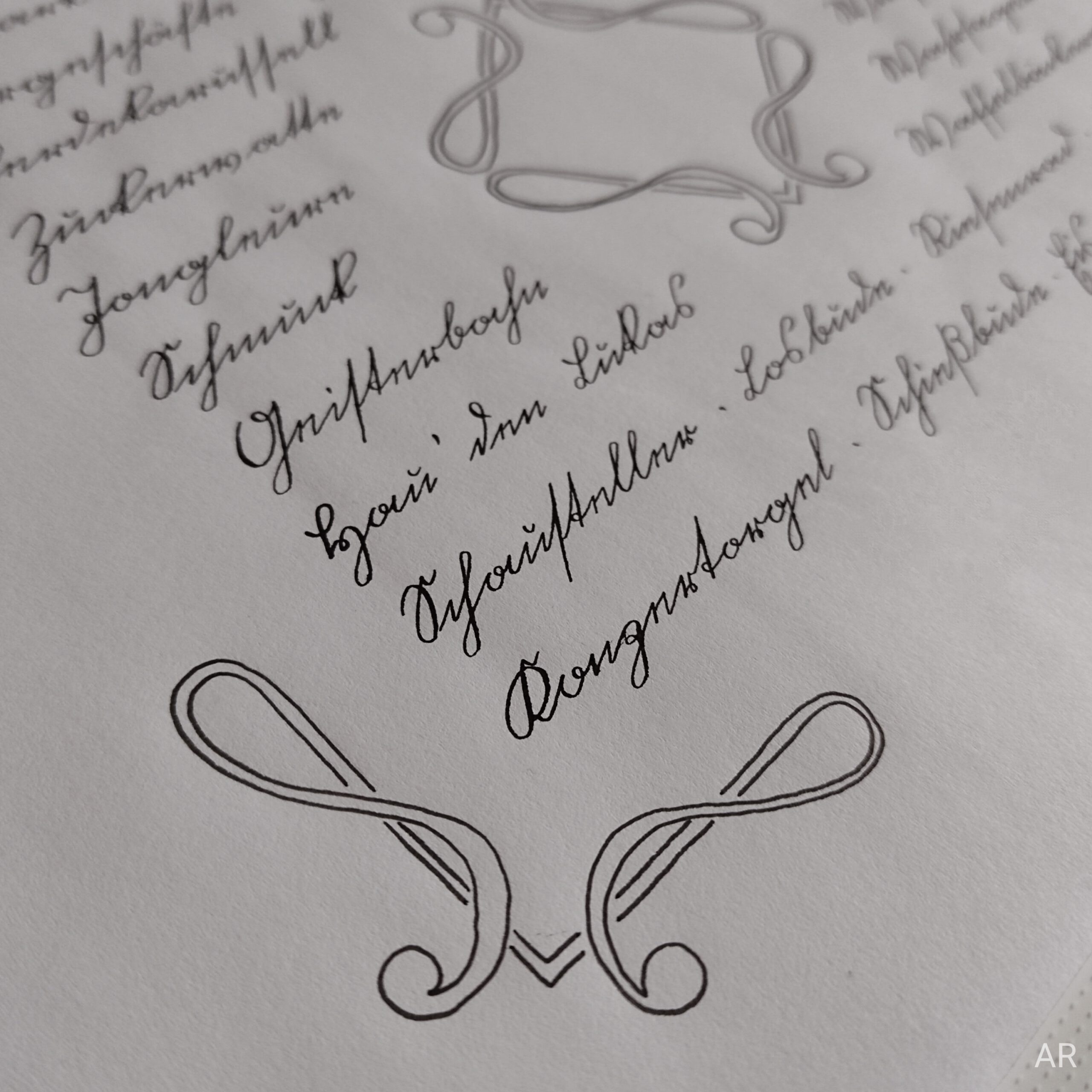
The words in Kurrent Script are:
Jahrmarkt (fun fair) – Volksfest (fair; yes, it´s quite the same …) – Tierschau (menagerie) – Wein (wine) //
Fahrgeschäfte (amusement rides) – Festzelt (carnival marquee) – Musikkapelle (band) //
Pferdekarussell (horse carousel) – Spiegelkabinett (house of mirrors) //
Zuckerwatte (candy floss) – Schiffschaukel (swingboat) //
Jongleure (jugglers) – Gaukler (jugglers; yes, again, same word …) //
Schmuck (jewellery) – Wurfbude (Aunt Sally; didn´t know it´s called that way!) //
Geisterbahn (ghost train) – Wahrsager (fortune teller) //
Hau‘ den Lukas (ring-the-bell) – Waffelbäckerei (waffle bakery) //
Schausteller (showmen) – Losbude (raffle ticket booth) – Riesenrad (Ferris wheel) – Bier (beer) //
Konzertorgel (concert organ) – Schießbude (shooting gallery) – Eiswagen (ice-cream parlour) – Raupe (roller coaster) //

